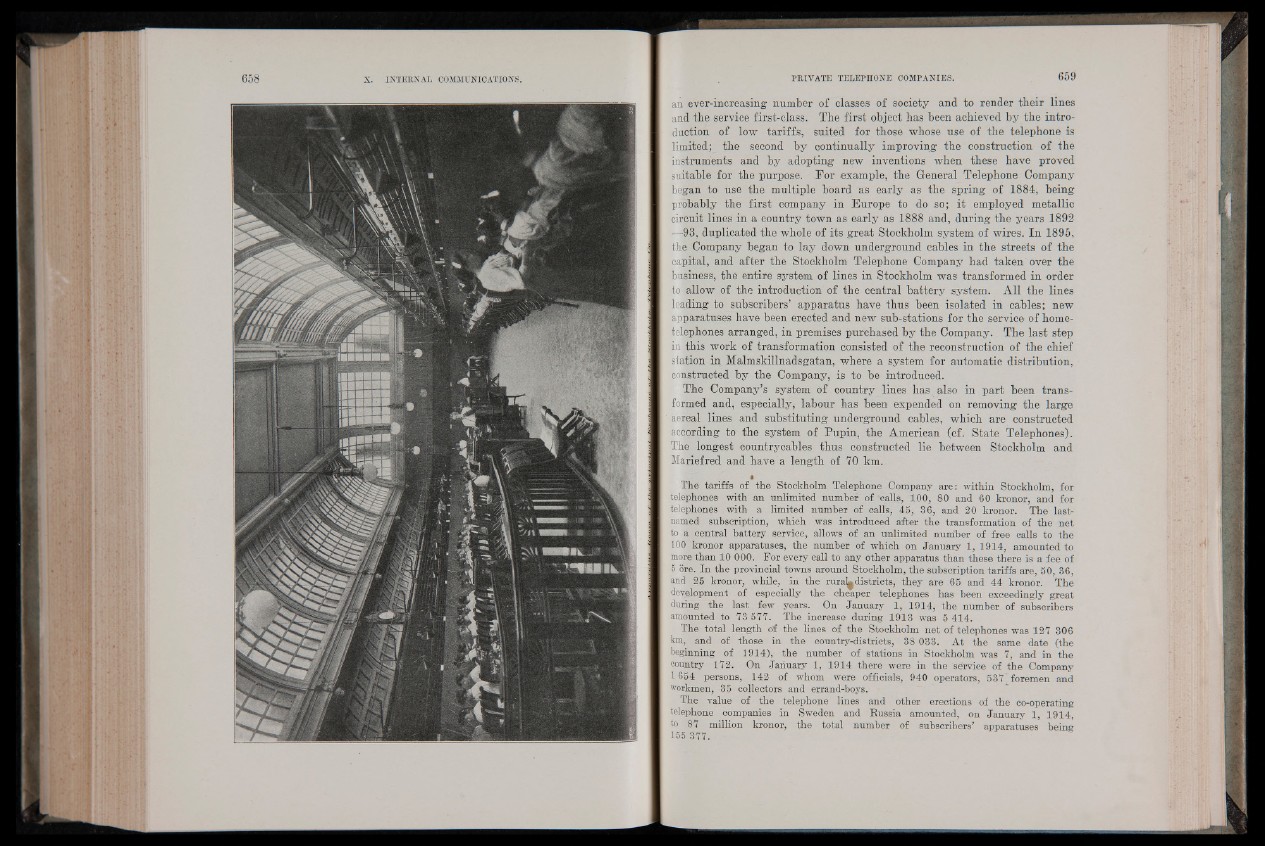
an ever-increasing number of classes of society and to render their lines
and the service first-class. The first object has been achieved by the introduction
of low tariffs, suited for those whose use of the telephone is
limited; the second by continually improving the construction of the
instruments and by adopting new inventions when these have proved
suitable for the purpose. For example, the General Telephone Company
began to use the multiple board as early as the spring of 1884, being
probably the first company in Europe to do so; it employed metallic
circuit lines in a country town as early as 1888 and, during the years 1892
—93, duplicated the whole of its great Stockholm system of wires. In 1895,
the Company began to lay down underground cables in the streets of the
oapital, and after the Stockholm Telephone Company had taken over the
business, the entire system of lines in Stockholm was transformed in order
to allow of the introduction of the central battery system. All the lines
leading to subscribers’ apparatus have thus been isolated in cables; new
apparatuses have been erected and new sub-stations for the service of home-
telephones arranged, in premises purchased by the Company. The last step
in this work of transformation consisted of the reconstruction of the chief
station in Malmskillnadsgatan, where a system for automatic distribution,
constructed by the Company, is to be introduced.
The Company’s system of country lines has also in part been transformed
and, especially, labour has been expended on removing the large
aereal lines and substituting underground cables, which are constructed
according to the system of Pupin, the American (cf. State Telephones).
The longest countrycables thus constructed lie between Stockholm and
Mariefred and have a length of 70 km.
•
The tariffs of the Stockholm Telephone Company are: within Stockholm, for
telephones with an unlimited number of •calls, 100, 80 and 60 kronor, and for
telephones with a limited number of calls, 45, 36, and 20 kronor. The last-
named subscription, which was introduced after the transformation of the net
to a central battery service, allows of an unlimited nunfber of free calls to the
100 kronor apparatuses, the number of which on January 1, 1914, amounted to
more than 10 000. For every call to any other apparatus than these there is a fee of
5 ore. In the provincial towns around Stockholm, the subscription tariffs are, 50, 36,
and 25 kronor, while, in the ruraUdistriots, they are 65 and 44 kronor. The
development of especially the cheaper telephones has been exceedingly great
during the la s t . few years. On January 1, 1914, the number of subscribers
amounted to 73 577. The increase during 1913 was 5 414.
The total length of the lines of the Stockholm net of telephones was 127 306
km, and of those in the country-districts, 38 033. At the same date (the
beginning of 1914), the number of stations in Stockholm was 7, and in the
country 172. On January 1, 1914 there were in the service of the Company
1 654 persons, 142 of whom were officials, 940 operators, 537' foremen and
workmen, 35 collectors and errand-boys.
The value of the telephone lines and other erections of the co-operating
telephone companies in Sweden and Russia amounted, on January 1, 1914,
to 87 million kronor, the total number of subscribers’ apparatuses being
155 377.